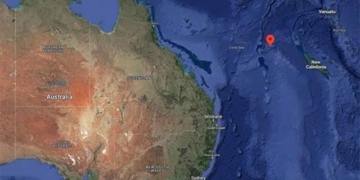Thanks to ultraviolet photography, scientists have discovered an older version of a chapter from the Bible, hidden beneath another part of a 1,500-year-old manuscript.

Passage of the New Testament translated into Syriac under ultraviolet light. (Photo: Vatican Library).
Historian Grigory Kessel from the Austrian Academy of Sciences announced this discovery in the journal New Testament Studies, a highly respected academic journal published by Cambridge University Press, UK.
Kessel stated that he used ultraviolet photography to capture a text written earlier, underlying three layers of other writings on parchment, a type of ancient book where authors often wrote over previous texts but still left traces of the original writing.
Ancient manuscripts were often written on parchment due to the scarcity of paper at the time. Authors frequently rewrote on the same parchment, causing the lower layers of text to be obscured.
The text mentioned in Kessel’s discovery is a lengthy passage from Chapter 12 of the Book of Matthew, representing the original version of a text translated into ancient Syriac about 1,500 years ago. He discovered this secret in a manuscript archived at the Vatican Library.
This manuscript discovery serves as a gateway for researchers to explore the early stages of the development of biblical texts, including content differences compared to modern translations today.
For instance, the original Greek text of Matthew 12:1 (the version most widely used today) states: “At that time, Jesus went through the grain fields on the Sabbath; His disciples were hungry, and they began to pluck heads of grain and eat.” However, the newly discovered Syriac translation varies slightly, stating: “they began to pluck heads of grain, rub them in their hands, and eat.”


















































